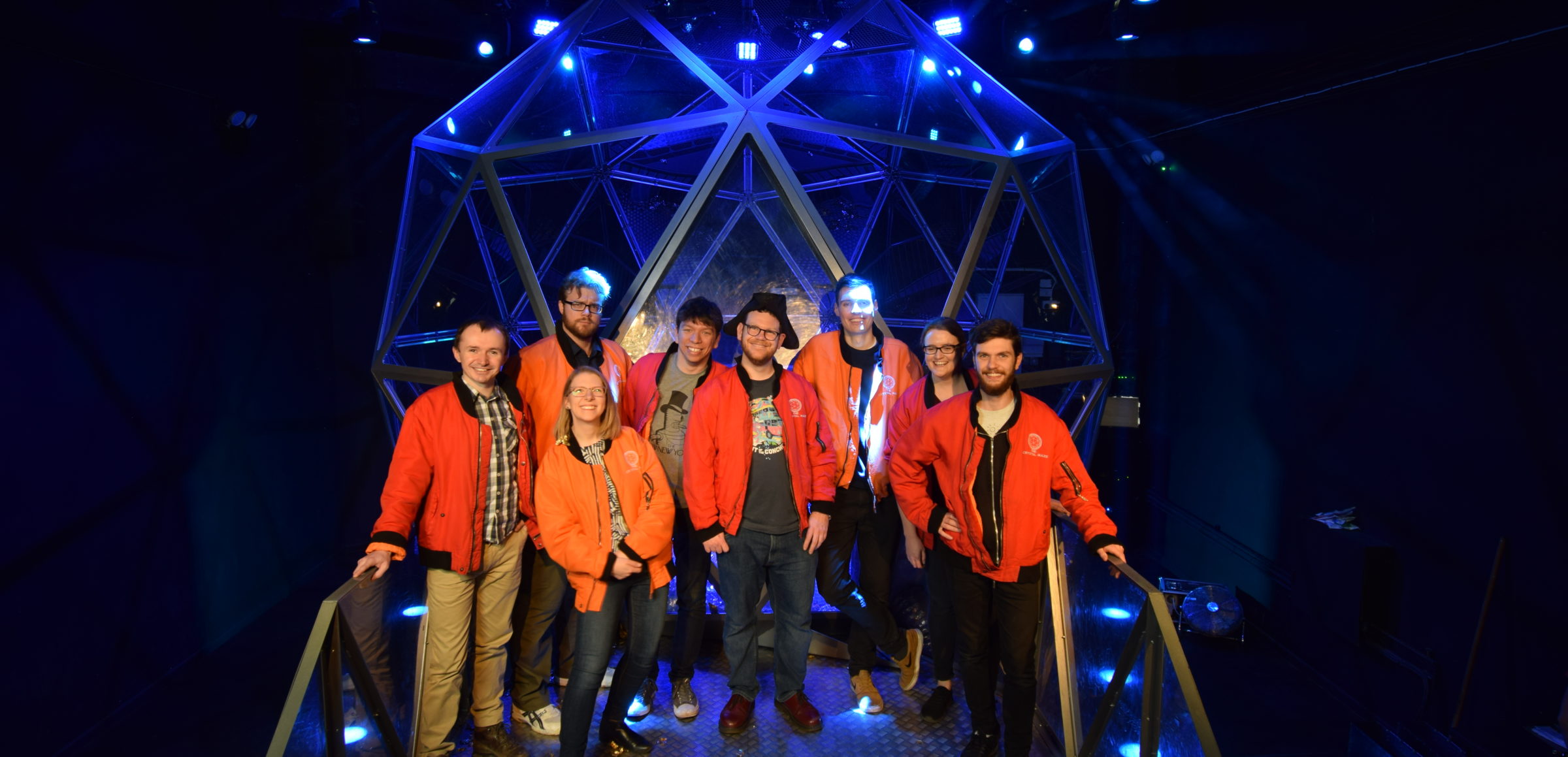As I suspected, moving continents took its toll on the number of books I read this year, although this was balanced out by lots of uninterrupted reading time during our travels and I finished at a respectable 38. And if Robert reads this, I’m sure he will already be banging his head against a desk saying that I should be counting quality over quantity anyway. So without further ado, here was my 2019 in books:
Fiction
I began 2019 in fine style with The Goldfinch, the most recently-published of Donna Tartt’s three novels and, sadly, likely to remain that way for a couple of years yet at least. It’s a long book, but well paced, and I thought a lot about the characters in-between reading sessions – no doubt partly because we were hiking through Torres del Paine National Park at the time. I’ll never forget waiting for the catamaran when a big plot twist occured, or coming to the end of the story while lying in my sleeping bag on our last night of camping, just as raindrops began to gently pitter-patter on our tent. I was also pleased that the book ended with less despair than I thought it would, and once we got back to civilisation I really enjoyed looking up the eponymous goldfinch painting.
The Grapes of Wrath had been lying on my to-read shelf for years and I think I had built up a bit of a phobia of it, partly due to Mr. Buchanan’s volcanic demolition of the very idea of using it for my comparative AS English essay. In the end I was pleasantly surprised, and the combination of Steinbeck’s scenic descriptions and his characters’ distinctive dialects creates an extraordinarily vivid world. Whatever else you make it, the relationship between Tom and his Ma is quite beautiful. If I was feeling in an AS English-y mood, I might compare it favourably to the relationship between Ignatius and his mother in The Confederacy of Dunces, another classic American novel which I had procrastinated about reading but one I suspect Mr. Buchanan would have enjoyed rather more. It was Todd who recommended this to me, way back on one of the staircases to the 6th floor of the Groupon building in Chicago, and I’m glad I got there eventually because it is very funny. The spoilt, delusional Ignatius is an utterly compelling character – albeit repellent and obnoxious at the same time – although I’m afraid I’m the type of person who unequivocally wanted him to be captured at the end of the book rather than cheered on the exploits of the ultimate anti-hero.
When I got back to London I found that everyone was reading Normal People on the Tube, and as usual there is some wisdom in the crowd. This is an engaging novel which flits between the minds of Connell and Marianne like a fly, mostly avoiding big moments of drama in favour of the little things which make up a realistic teenage relationship. I loved the way it captured the complicated, not-one-thing-or-the-other type of bond which can only really form between two people at school but then stays with you forever. Another great novel about relationships this year was An American Marriage, the story of a relationship wrecked by a wrongful conviction and imprisonment. When reading this you really, really want everything to work out – why can’t everything just go back to the way it was? – but of course it can’t, no matter what the formal language of justice would say, and it’s a gut-punch.
When I read Celeste Ng’s Little Fires Everywhere last year I failed to write any notes, so after finishing Everything I Never Told You this year I was determined to remember a little more. I think my feelings towards both books are similar, though: I really enjoyed reading them, but I do struggle to believe in the characters. Would the sibling relationship between Nath and Lydia, for example, really blossom after years and years of being parented so differently? But these aren’t meant as criticisms, just… wonderings. I am happy to criticise Robert J. Sawyer’s Hybrids, though, the third of his Neanderthal Parallax trilogy which opened so well but is a classic case of putting all of the interesting ideas into the first book. By the end it’s the rather tedious religious question which becomes central to the plot: a shame, because it’s by far the least interesting part of the whole thing.
Conversely, I failed to love the first of Elena Ferrante’s Neapolitan Novels last year but am so, so glad I kept going with The Story of a New Name in 2019. Essentially, the problem is that the author considers the whole thing to be one long novel, so the beginning is slow with a lot of build-up but by the start of the second book you can just get straight to the plot. The friendship between Lenù and Lila is an incredible literary creation and I can’t wait to see how it unfolds further next year.
In 2019 I also completed Chinua Achebe’s African Trilogy with Arrow of God and No Longer At Ease. I’ve totally stolen this point from the introduction, but it is true that it’s the metaphors and proverbs from Arrow of God which get inside your head after a while and make the biggest impression. The fact that the scenes from the perspective of the colonial administration were much easier for me to follow (with familiar-looking names that didn’t require any checks in the glossary) than those in the villages speaks volumes about having cultural reference points. Anyway once I got into this book I preferred it to the original Things Fall Apart. No Longer At Ease jumps forward to the late 1950s to when independence feels close and takes another look at cultural clash, this time between the push-and-pull of forces which lead a good man to accept a bribe and fall into corruption. These aren’t always easy books to read, but I’m glad I did.
I’ll tell you what: The Seven Deaths of Evelyn Hardcastle is amazing fun, and I’m very grateful to Katie for lending me this time-travelling, body-swapping murder mystery as I didn’t want to put it down until the puzzle was solved. Katie also recommended The Long Way to a Small Angry Planet which I have mixed feelings about. The characters are adorable, the inter-species worldbuilding is clever and thoughtful and I do appreciate that the unlikeable jerk on the ship happened to be named Corbin. (Jokes!) I just didn’t love the plot structure meandering between different standalone ‘incidents’ rather than a clear overriding narrative, although I will happily come back to the series for more. As for Neil Gaiman’s Trigger Warning – a collection of short stories – it was the book that came back to me for more, as when I fell asleep in Vietnam after reading one of his tales set on the Isle of Skye it promptly continued to unfold in my fevered nap-dream. It’s what Gaiman would have wanted, I guess?
All books in the sci-fi genre owe some sort of debt to Asimov, and this year I reached Foundation and Empire and Second Foundation in his Foundation series. This may be completely off-base, but when I picture the Second Foundationers quietly pulling the psychic strings of the universe behind the scenes it definitely makes me think of the bald guys from Fringe. I also read Ursula Le Guin’s The Left Hand of Darkness which is surely a masterpiece of science fiction, and plunges into the cultural alienation of a visitor to a hermaphrodite species on a very cold planet. Unlike the Neathanderthal series there are no glaring chunks of exposition, but instead so many layers and so much to think about. Highly recommended.
Homegoing begins in an eighteenth century African village which becomes involved in the slave trade – not a perspective I can remember from a novel before, and it felt like discovering the missing first half of Octavia E Butler’s Kindred in the sense of better understanding where American slaves were taken from. Each chapter of the book then moves forward through the generations and between two different strands of the same family, which means that you only get a thin slice of each character. By the end the story had passed through so many lives that the earlier generations were just a hazy memory… which, in a sense, is just like real life. The ending of the book is perhaps a little neat and contrived, but otherwise I really enjoyed this.
Contrary to expectations, I also really got into My Year of Rest and Relaxation. If you simply describe the plot (wealthy New Yorker medicates herself to sleep for a year) it doesn’t sound very compelling at all, but the writing is incredibly engaging and completely sucked me in. It also helps that the book is fairly short and doesn’t overstay its welcome. Conversely, while it usually takes me a while to get into ‘epic’ multi-generational books like The Glass Palace, in this case I’m not sure I ever truly did. I don’t have any specific complaints (aside from the last few chapters where it felt like the author was rushing to lay out all of the remaining story) but it just never became as compelling as both the plot and the characters should warrant. That said, I did appreciate learning more of the history of Burma/Myanmar and was pleased when I kept recognising locations (Penang! Butterworth! Cameron Highlands!) from our travels.
The Year of a Flood is an excellent sequel to Oryx and Crake, although it’s actually more of a parallel retelling of the same events from other perspectives: this time, those of the masses in the ‘pleeblands’ and the environmentalist cult of God’s Gardeners. Atwood continues to build out her astonishingly well-developed world here, and my only frustration when reading it was that as Amanda had lent me her Oryx and Crake paperback I couldn’t go back to check the original references to the main characters! I certainly had no memory of Ren/Brenda at all, but although I believe that she only appears very fleetingly in the first book it is satisfying that her diary message for Jimmy exists in both to tie the plots together.
I also made a very welcome return to world of His Dark Materials with The Secret Commonwealth, the second installment of Philip Pullman’s new trilogy. From the very beginning, I was captivated (and devastated) by the notion of Lyra and Pan falling out and not talking to each other, and it was wonderful to see the world open up as the plot went on as Pullman pushes open the door wider than the very narrow story of the last book. That said, I don’t feel that he really nailed Lyra as a 20 year old: her philosophy doesn’t ring true given her own experiences in the original trilogy, and there are definitely some badly-handled sexual themes. It also ends at a sudden juncture mid-plot! Nonetheless, I did really enjoy it, and at the end of the year I snuck back into Pullman’s world one more time with Once Upon A Time In The North – a wonderful novella which tells of the first meeting between Lee Scoresby and Iorek Byrnison.
But my absolute standout favourite book of the year has to be Patrick Rothfuss’s The Name of the Wind. I remember very clearly the night in Motel Bar in Chicago when Teresa recommended this book to me back in 2016, and I finally started reading it during the Torres del Paine trek as I thought a fully-fledged fantasy novel would be well-suited for hiking and camping. I was rewarded with the first part of this classic and absorbing tale of the heroic Kvothe – seasoned, to be fair, with a fair dose of wish fulfilment – and after exercising a lot of willpower to avoid reading the sequel immediately, I am now very excited to return to the world of The Kingkiller Chronicles as soon as I can in 2020.
Non-Fiction
My first non-fiction book of the year was Atul Gawande’s Being Mortal about end-of-life care. It’s the kind of thing that we would benefit from discussing more openly within families before a crisis hits – indeed, that’s really Gawande’s whole point. He writes persuasively about the extent to which children will usually ‘choose safety’ and maximum medical intervention for their aging parents – even though they would usually prefer freedom and independence for themselves – although this does glide a little too easily over what happens with mental as well as physical decline. You probably won’t be super-excited to pick up this book, but it’s worth thinking about.
On a much lighter note, Time Travel: A History is a very well-written guide to the concept of time travel and its history across science, literature and culture. But it’s also written in an unnecessarily acerbic tone, and rather disdainful of a genre that so many people could have written about with a lot of love. I loved reading it – because I love time travel! – but I could have done with a friendlier guide. G.H. Hardy is much more enthusiastic about his chosen subject, mathematics, in his very short classic A Mathematician’s Apology. I decided to read this after seeing a play about Hardy and Ramanujan in Chicago and it’s a difficult book to review, but given its length it is well worth giving it a go.
The first chapter of Boss, Mike Royko’s classic text about longtime Chicago Mayor Richard J. Daley, brought me vividly back to the city with its descriptions of its architecture and, sadly, its horrible freeways. Everyone knows that Chicago’s machine politics is ugly and corrupt – and this book will only confirm how depressing the city’s history is – although shortly after I finished it the city did elect a black, female and lesbian mayor so, even though a figurehead is not everything, that did feel like… something.
Giles Tremlett’s Ghosts of Spain was OK, but just OK. I read it because I wanted to learn a little more about modern Spanish history, and now I do understand a little more about modern Spanish history – especially the ongoing ghosts of the Civil War – so that was useful enough. For some reason I just didn’t love his writing style. And although it’s probably unfair to mention this one tiny thing, his use of the word ‘poetess’ at one point made me cringe. Punch and Judy Politics was perhaps exactly the opposite. I didn’t really need to learn anything about Prime Minister’s Questions – who does? – and the reason the authors can get so many gossipy interviews about it is because almost everything that happens in PMQs becomes unimportant immediately. But gossip is fun, obviously, and there were one or two insights into contemporary politicians which I found to be very revealing.
Parliament has changed a lot since the rule of King James VI/I, and yet – as ever – reading his Political Writings will throw up oddly modern moments. James was King of both England and Scotland as two separate countries, and although his speeches urging unification were ignored, reading them gave me a bit of a tingling feeling given how close to the end of said union it now feels that we are. On other topics, James has the force of conviction you would expect from a monarch whose principal position is the divine right of kings. For example, he advises his son not to duel, not to allow guns at court and not to believe that rhyming is the most important part of poetry, which to my mind is all pretty good advice. But he also instructs him to eat plenty of meat without any sauce – because sauces are somehow decadent – which is what comes from being King and never having anyone turn around and tell you to stop talking and just give the sauce a try. He’s pro-bridges, pro-roads, pro-schools and pro-hospitals but also anti-pubs and – amusingly – anti-London, which he thinks is too big and too powerful. “Even so now in England, all the country is gotten into London; so as with time, England will only be London, and the whole country will be left waste,” he complains. You may have heard that before.
Finally, two horrors of the twentieth century are explored in Adam Tooze’s The Making and Breaking of the Nazi Economy and Philip Short’s Pol Pot: The History of a Nightmare. Tooze has the more honest title – this really is a book about the Nazi economy rather than a general history – and the overriding message is not only that Nazi Germany was completely outmatched in economic and industrial production during WW2 (especially once the US joined the war) but that its leaders knew this full well. And yet they ploughed ahead anyway, in the spirit of “the gap is only going to widen”, with predictable results. The statistical focus makes the narrative a bit of a slog to get through at times, but it’s a memorable analysis and there are some truly illuminating moments when the horrific contradictions of Nazi war aims (for example, extermination versus slave labour) are brought into direct conflict with each other. If you only have a casual interest, this is probably one to file under “find a good podcast about instead”.
In comparison to Nazi Germany, Pol Pot’s Khmer Rouge regime in Cambodia is only glancingly mentioned in modern British culture, so after visiting the Genocide Museum in Phnom Penh I felt compelled to start reading up on it immediately. Like all civil wars it’s a complicated story – much more complicated than any story told through the simple “West vs. USSR” schema. I said that Short’s title was less honest because this is not really a book about Pol Pot himself, but rather the whole painful story of how Cambodia came to be ruled by what began in the 1950s as a rather hare-brained Parisian student group but went on to seize power and then murder nearly a quarter of Cambodia’s entire population. It’s never a good idea to try and rank atrocities alongside each other, but there are certain aspects of the Khmer Rouge regime that were so extreme and so crazy – their abolition of currency, their forced evacuation of the entire capital city for the countryside – that make them particularly grimly fascinating. Short’s book is a perfectly good guide, but however you choose to learn about it this is an awful but compelling part of our very recent global history.
Last time I promised evidence of a fully-decorated Christmas tree and here you can see it in all its finery combined with our Hanukkah decorations and an excitingly train-themed menorah. This last item was a gift from Randi’s parents who are in the middle of staying with us for a couple of weeks over the holidays, which has been really wonderful and a great excuse to eat at all of our favourite local places in addition to all of the regular seasonal festivities.
It’s probably a good thing that all of this stopped me from blogging straight after the miserable election night two weeks ago, during which I felt a surge of rage flow through my bloodstream (you really spoke for me, Alan Johnson) which has now been temporarily blotted out by Christmas. Indeed, the very next day after election night was eviivo’s Christmas party, and although I didn’t have the energy to stay awake for the whole night I did stay long enough to collect my Secret Santa from a (somewhat martial) Father Christmas.

On Saturday night, Randi and I were joined by Irfan for an incredible dinner at Sophie and Naomi’s astoundingly tasteful and beautiful flat. Feeling too lazy to go home in the rain aftwards, and/or just wanting more time with their adorable dog Lottie, we crashed there overnight before rousing ourselves the next morning for our final London LOOP walk of the year. By coincidence, this walk – section 24 – is technically the ‘last’ one if you decide to walk the route in order from the start. But as others have noted, it’s not exactly the most inspiring finale. Most of the path is very industrial – exemplified by the scent of the Tilda rice factory – and there’s no grand monument (or even a sign!) at the end to celebrate the whole thing. I’m glad this won’t be our lasting memory of the LOOP.

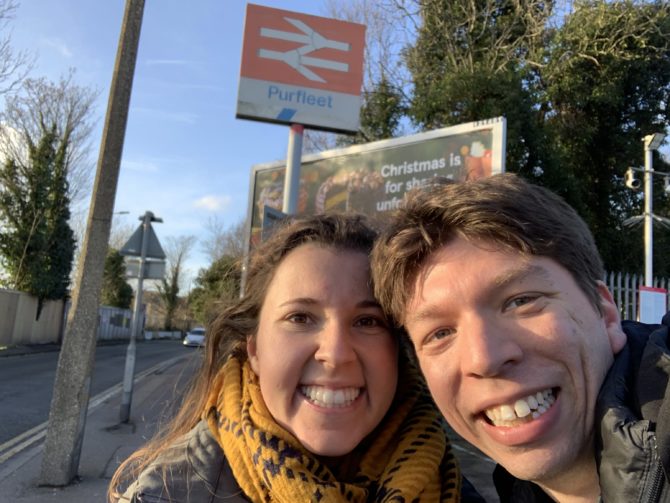
A week later, I popped down to Hassocks for Simon and Fleur’s wintery wedding day. They added a few Christmassy touches which lent an extra special feel to an already special day, including a welcoming mug of hot chocolate at the start, mulled wine in the evening and a giant and beautifully decorated tree in the barn where the ceremony took place. One of the things that everybody loves about Simon is his gift for bringing people together, so it’s totally unsurprising that at his wedding I had such a good time chatting with old friends and new acquaintances. My only complaint is that as I took my place at the Bakerloo line table for dinner I was confronted by a very sad-looking incarnation of me. If you look closely, you’ll see he’s now bringing his misery to our Christmas tree too 🙁


Back in London, last week we saw Come From Away with Randi’s parents. This joyful and uplifting musical is based on the true story of the 38 planes which were grounded in the remote Canadian town of Gander on 9/11. I wasn’t expecting anything based on 9/11 to be so enjoyable, but this was a perfect feel-good show for this time of year and I’ve had much of the soundtrack stuck in my head ever since. Then, on Christmas Eve Eve, we joined up with my mum for the Christmas at Kew event at Kew Gardens. Essentially, this is a very middle-class version of Winter Wonderland but thankfully the weather stayed dry for us and we enjoyed a very nice stroll around the festive lights and sounds of the gardens.



And then – finally – it was Christmas! On Christmas Eve the whole family assembled at my parents’ house, guzzled down the latkes fried by Randi and her mum and played a few (generally successful) rounds of Codenames before laying out the stockings and going to bed. The extra guests obviously gave the magic a boost because it was a particularly strong haul of presents this year! On Christmas itself we enjoyed the traditional large family gathering at Carolyn’s with amazing food, a tough quiz and a very violent game of mafia (or ‘slaughter of the innocents’). Ah well. Merry Christmas and Happy Boxing Day!
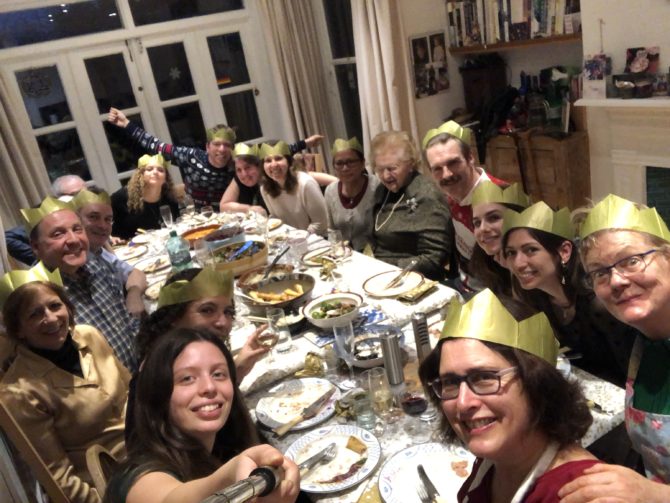
It’s December, and the windows of our (hard-won) Percy Pig advent calendars which stand between us and Christmas are falling open with alarming speed. Last weekend we selected this year’s Christmas tree from the tree sellers in Brockwell Park, carried it home and adorned it with coloured lights… photos to follow once we finally get around to adding the baubles, assuming we don’t miss the deadline.
Everyone is certainly busy enough without needing a ridiculous December election thrown in. But since we do, and since I’ve been deeply undecided about who to vote for, I thought I’d do the responsibly civic thing this week by attending the Herne Hill Hustings with Randi to hear from the candidates themselves. As the Lib Dems are standing aside here as part of the ‘Remain Alliance’ with the Greens – and both the Brexit Party and UKIP candidates failed to show – we had four people on the panel: the incumbent Labour MP, Helen Hayes, plus the Greens, Tories and Christian People’s Alliance. Helen Hayes won over 69% of the vote in 2017, so the result is a bit of a foregone conclusion, but nonetheless I was impressed by her performance and – thanks to a generally-reasonable debate – left feeling just a smidgen better about the state of democracy. We live in a bubble of near-absurd proportions, though; the vote to Remain in 2016 in Lambeth was almost 79%.
In comparison to the townhall I attended in Chicago, two things really stood out. The first was that – in the name of the environment – the leading candidate was willing to take a brave position against wood-burning stoves. And secondly, the straw poll at the end was conducted by meringue, as the organisers had prepared a bunch in each party’s colours in advance before inviting us to pick our winners through the power of eating. This is a truly excellent innovation and something that I think could be extended much further.

For more traditionally festive cheer, look no further than the sixth Secret Vegetarian Festive Dinner which Abbi and Paul hosted last Saturday night. (Well, I say it’s the sixth. Strictly speaking I don’t know how many they might have sneaked in without me while I was away, but at the very least it was my sixth one.) As you might remember from many years ago, this was once the annual pre-Christmas party for my group of London friends, and while the attendees have changed over the years (we’ve never had a three year old before) the tradition of tasty vegetarian food, lots of wine and stealable Secret Santa presents continues. The real innovation was that Randi, Josh, Anna and I all stayed the night rather than taking a series of night buses right across London. I’m not sure why we didn’t think of that before, but it was a great idea 😀
Although I keep inviting myself over to Katie’s to watch classic Doctor Who stories (honestly, The Tenth Planet was incredible – the original Cybermen were so much better than anything from the 80s, and the two of us were mimicking them for hours) Randi hadn’t actually seen Katie and Kim’s flat yet, so on Friday we forwent Doctor Who in favour of a more communal raclette dinner. We also admired their very, very fat Christmas tree and failed to help Katie and Kim progress in their stressful video game about making soup. And as we left, to continue the European theme, we discovered that St. Nicholas had visited on his appointed day and stuffed our shoes with chocolates. Thanks, St. Nicholas!

Yesterday was Simon’s stag do: a packed day of enjoyable/exhausting activities which began with The Crystal Maze Live Experience. I have to admit that the most I’d ever seen of the Crystal Maze was the 15 minutes which Katie had hurriedly prepped me on the night before, but that was enough to get the general idea, and the live experience is so well done that – whether by nostalgia or otherwise – you quickly get sucked in. While I wasn’t stunningly helpful to the team with my individual challenges, overall we won a big victory over our rivals and I was very much a fan of all of the excited running/crawling/climbing from zone to zone with the show’s catchy theme tune playing in the background.
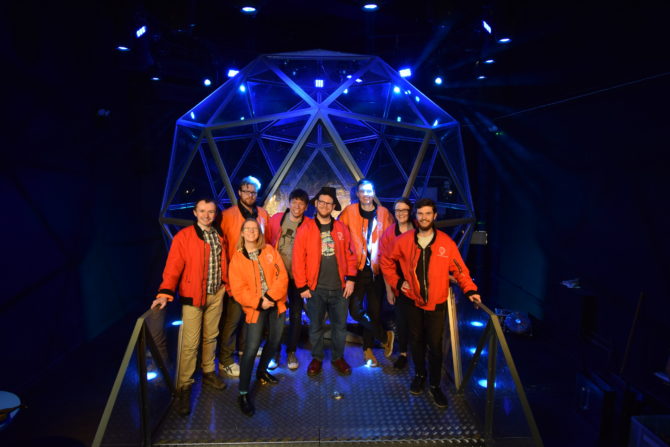
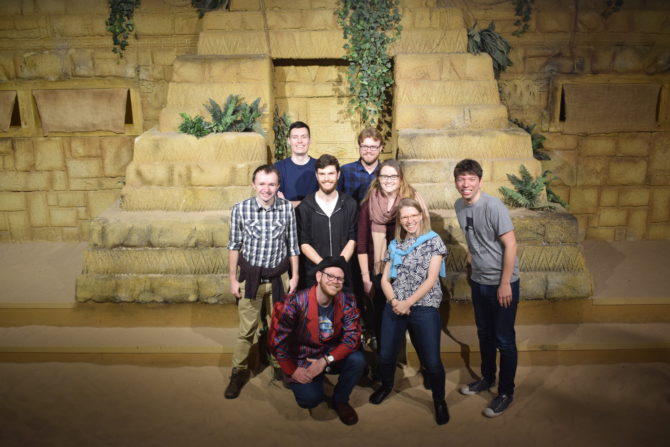
From there we moved on to lunch at Simon’s beloved Wong Kei and several hours of Archery Tag, which I wasn’t very good at (I don’t think shooting arrows is really my thing) but I did appreciate the lack of any actual pain, unlike paintball. Finally, in the evening we gathered together for drinks and pizza and one very extensive multimedia quiz about Simon, which my team won thanks to (a) our amazing insight into Simon, (b) the decent amount of material which I had contributed thanks to my tendency to archive everything for future use. (It has to pay off sometime!) Aside from winning, it was just generally lovely to spend time with so many faces old and new. Plus, it’s always handy to be able to bend the ear of the guy who manages your local Tube station…


Finally, today we celebrated my great uncle Leonard’s 80th birthday with the family. Many happy returns!
After five years’ worth of American Thanksgivings under my belt, this Saturday we had a bit of a role reversal and played host ourselves to a (slightly early) Thanksgiving dinner in London. Along with my family we were joined by Tash’s friend Lucy and our American cousin Tessa, who is away from home while studying here, so we tried our best to recreate an authentic Thanksgiving experience with plenty of food, drink and group declarations of thankfulness. (Randi considers the traditional “go around in a circle and say what you’re thankful for” version unacceptably sentimental, so instead we have stolen Catherine’s family tradition of giving thanks for items in alphabetical order.) For games we played the rhyme-fest Obama Llama, and among the many high-quality dishes I think Katie’s pumpkin pie deserves special praise for fulfilling the Thanksgiving brief. Hurray!


This is obviously a great time of year to squirrel away inside on the sofa and watch TV, and recently we’ve been enjoying both David Attenborough’s Seven Worlds, One Planet and the new adaptation of His Dark Materials. I watched the first episode of Lyra’s great adventure to the North with my sisters and it brought back wonderful memories of us all reading and enjoying the original trilogy of books. There are some images from these stories – especially in The Amber Spyglass – that really will stay with me for the rest of my life, and I hope this time (unlike the aborted film series) that they manage to get to them!
Last week I was also delighted to get to see Tim Minchin at the Apollo after Andrew and Bonnie had a spare ticket going. (Side-note: it is a real flaw of English that there is no collective word for ‘aunt and uncle’. A real flaw.) Minchin’s blend of great musical talent, wit and rationalism is wonderful, and I enjoyed every single performance from the intimate to his grandiose rock opera. That weekend, Randi and I were back with Andrew and Bonnie (see, still no collective word for them) – plus Frankie, Anya and Tessa – to meet my newest cousin: little baby Lena and her adorable (but very judgemental) face. With all of the Americans and pseudo-Americans floating around the family, I wouldn’t be surprised if she ends up at a Thanksgiving of her own one day.
It’s no secret that the family on my mum’s side is bigger, louder and more addicted to WhatsApp than my dad’s East Anglian contingent. But there was always something relaxing and magical about our childhood trips up to Suffolk, and by some strange alchemy Tash and I both picked the same weekend to induct Cormac and Randi respectively into the joys of Coney Weston and Knettishall Heath. Naturally we had both also asked our cousin Julie to drive us around our old haunts on a rainy Saturday afternoon, and (since she is wonderful and very patient) that is how we came to be loitering together outside of our grandparents’ old bungalow taking photos through the hedges and assuring the new owners that we’d leave in a minute.
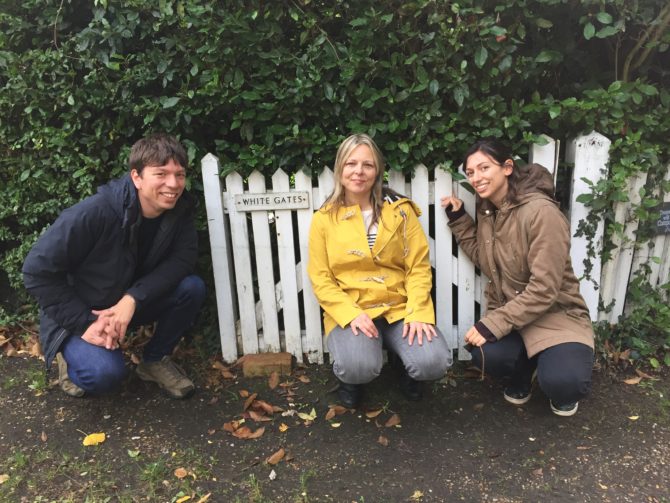

As it happens, Randi has been a fan of Bury St Edmunds since her very first visit to the UK and this trip only cemented its reputation as the foodie capital of Suffolk. (In all honesty, good luck finding better toasties anywhere else.) We also hung around for the Bury St Edmunds Fireworks Spectacular, an event which looked to be in some danger of cancellation for the second year running before the organisers determined that all of the undeniable wind and rain was nevertheless blowing away from us all in an acceptable direction. Pretty fireworks, check. First mulled wine of the winter season, check. My only complaint was the lack of any bonfire, which I still need to prove to Randi is actually a core component of Bonfire Night.


After the fireworks, Randi and I stayed over with Julie in the village of Harleston before enjoying a delicious farm-sourced breakfast and hanging out with her partner David, her parents Derek and Ginny and her son Kieron who (shockingly and frighteningly, since in my head he’s about 8) is now an actual adult who can chat to me about work while also very kindly cutting my hair. (This is a professional skill he has, not some odd family ritual involving clippers.) It was so wonderful to see everyone again after way too long and I’m already excited about our next trip up there! Although hopefully next time we won’t have to spend over an hour on the way back stranded in a field between Diss and Stowmarket after our train “hit an obstruction” while the driver went back-and-forth with control about whether it was a better option to (a) empty the last two carriages and proceed on at 5mph without breaks or (b) summon a “rescue train” and evacuate over the tracks…*
Continuing the nostalgic childhood theme, last week I had a delightful meet-up with my old piano teacher, Simon. I’d love to say something normal like “we just ran into each other after all these years!” but the truth is that I was inspired by an old photo to stalk him over e-mail and invite him to dinner and drinks which he graciously accepted despite not having seen me since I was 10. (I wasn’t even a very good piano player, to be honest, but he was too tactful to mention this.)
When not stalking people I have also been seeing a bunch of good stuff recently, starting with Translations at the National which is the kind of complex, multi-layered play (about the colonialism of the English language in Ireland) which makes me wish I was still in an A-Level English class to examine it all. Katie and I continued our classic Doctor Who odyssey in her new flat with The Greatest Show in the Galaxy (a flawed masterpiece) while Randi and I went out to the cinema to see Chris Morris’s new film The Day Shall Come (the spiritual successor to Four Lions which comes close to matching it for enjoyable terrorist slapstick before the brutal ending) and to the London Palladium to see German comedian Henning Wehn in stand-up. (You know him! He’s the one from the panel shows!) We also explored Putney, walked along the banks of the Thames a lot and met up with Harriet and her husband Zach for lunch in Golders Green so that Randi could finally lay her hands on some decent challah bread in London.
This week was also the week that I got a little too invested in Halloween. I’ve never really been a huge fan myself – give me mulled wine over fancy dress any day – but I do appreciate other people enjoying themselves, especially when those other people are young children who have made the effort to dress up and shakedown their neighbours for sweets. So I raced back from work early to put out a few lanterns, affix a scary doorbell to the door and pour out 50 mini bags of Haribo and some chocolate into some large bowls. For a horrible hour I proceeded to pace around our flat, sticking my head out the window and looking forlornly up and down the empty street. But, then, a Halloween miracle! The trick-or-treaters arrived, the children’s demands for sugar were met and the spooky tones of the scary doorbell rang out into the dark for all of Tulse Hill to hear.
*Disappointingly, they ended up going with the first option.





